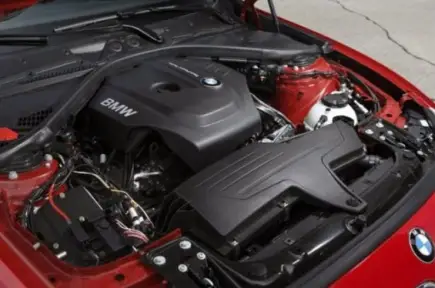
The BMW 218i has often been touted as a superior option to the B-Class. However, the initial enthusiasm waned as engine failures became evident at surprisingly low mileages.
Most units struggle to reach 62,137 miles; many fail when only in the low tens of thousands. An engine failure in the BMW 218i has become a common concern.
The foundational design of the 218i is centered around a three-cylinder engine, developed using the downsizing principle. This aims to generate maximum power from a smaller displacement and fewer cylinders.
The 218i Active Tourer, with its three cylinders, van-like design, and front-wheel drive, represents a revolution in BMW's company history. Presently, the 2-series has become one of the most successful lines for the Bavarian manufacturer.
Let's delve deeper into the 218i's B38 engine and highlight typical issues.
BMW 218i Engine Failure - What Next?
Should there be damage due to crankshaft bearing failures—a known issue acknowledged by BMW—the manufacturer typically covers the replacement costs for the faulty bearing shells. However, it must be proven that this defect originated from the factory error. In certain scenarios, a complete engine replacement may be necessary, depending on the extent to which the damaged crankshaft bearings have affected other components.

Software issues are another recognized manufacturing defect, and repairs in this regard are usually covered by BMW. Any authorized dealership should be capable of installing the software update, a process which isn't particularly time-consuming.
The costs associated with an engine failure depend on numerous factors, with the primary one being the selected method of damage repair. There are three main options:
- Engine repair
- Engine replacement
- Selling the car as a damaged vehicle
BMW 218i Engine Damage Symptoms
| Symptoms | Cause |
|---|---|
| Knocking or banging from the engine compartment + Clutch is hard to depress and amplifies the noise + Gearbox issues | Defective Crankshaft Bearing |
| Rattling from the engine compartment | Stretched Timing Chain/Worn Chain Tensioners |
| Peculiar glycol-like odor + hazy exhaust | Burnt Coolant due to a faulty head gasket/Crack in the cylinder head |
| Overheated engine | Coolant loss due to defective front cover gasket or leaky hose |
| Blue exhaust smoke + increased oil consumption | Leaky Head Gasket/Worn Piston Rings |
Signs of Engine Damage
Engine failure in your 218i can manifest in various ways, but a common indicator is a knocking or banging sound from the engine compartment. This sound is frequently more pronounced during cold starts and often subsides once the engine warms up.
Depressing the clutch may amplify this noise. Additionally, drivers might notice that engaging the clutch requires excessive force. Moreover, the gearbox occasionally struggles when shifting.
It's also essential to listen for other noises from the engine compartment. A rattling sound, often indicating a stretched timing chain, is not uncommon.

Another telltale sign is a peculiar odor accompanied by particularly hazy exhaust. Many reports suggest that the scent resembles glycol, hinting at burnt coolant. As known from various manufacturers, special attention to coolant levels is crucial for three-cylinder engines.
Given the compact engine's susceptibility to extreme thermal conditions, even a slight reduction in coolant levels can signify potential damage.
Oil loss often accompanies these issues. Thus, regular checks on oil levels are imperative.
We advise inquiring about the standard consumption of the model when purchasing the vehicle. If consumption exceeds the provided figure, merely topping up the oil isn't a sustainable solution. While this approach may address the immediate oil deficiency, it doesn't resolve the underlying issue, and additional problems are likely on the horizon.

Excessive or blue smoke emission from the exhaust indicates oil in the combustion cycle. Keeping an eye on the rearview mirror is advisable.
Lastly, it's essential to recognize the classic signs of engine damage. Given their design and operation, engines developed post-downsizing are more susceptible to damage.
In this article, we've covered the most common BMW 218i breakdowns. Unfortunately, these are not all the difficulties you may encounter. You can read more about BMW 218i key problems here.
How to prevent engine problems
| Items to Check | Action |
|---|---|
| Coolant level | Refill if necessary (refer to markings on the container) |
| Oil level | Refill if necessary (refer to the dipstick) |
| Exhaust emissions | If excessive/blue smoke is noticed, visit a workshop |
Same articles

Understanding Vehicle Inspection and Verification Services: Why They Matter for Every Driver
GuidesVehicle inspection and verification services are an essential but often overlooked part of keeping roads safe and cars legally compliant. Most people only think about inspections when it’s...
KLIFEX Brand Overview: High-Quality Automotive Repair Kits for Affordable Repairs
GuidesThe automotive aftermarket has long needed solutions that combine reliability, durability, and affordability. Many car enthusiasts and services are looking for a way...
Fast, Reliable Vehicle Emissions & Inspection Services Made Simple
GuidesFast, reliable emissions and inspection services are essential for keeping vehicles road-ready, compliant with environmental regulations, and safe for daily driving. If you’re looking for quick...

